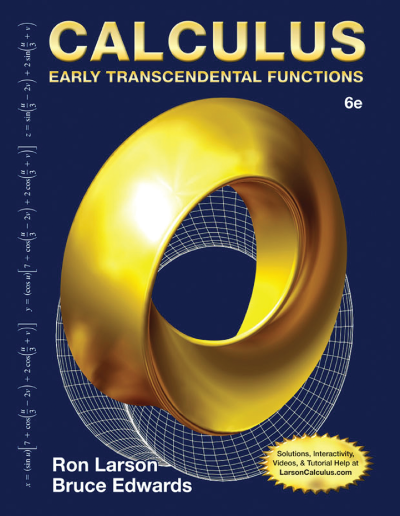Blaise Pascal
(1623 – 1662)
Blaise Pascal was an enigma. Analyses of his psyche vary, but virtually all of his biographers agree on one point: he was the greatest might-have-been in the history of mathematics. Tangled in a net of illness and religious fervor, Pascal devoted few of his thirty-nine years to the study of mathematics; nevertheless, what he was able to accomplish in this brief period was profoundly significant.
The second of his parents’ three children, Pascal was born on June 19, 1623, in Clermont-Ferrand, in the province of Auvergne in central France. His father, Étienne Pascal, was a talented mathematician and musician. Blaise’s mother died in 1626, when Blaise was three years old.
Because Blaise’s health was precarious, Étienne taught the boy at home. Étienne thought it best to withhold all knowledge of mathematics from his delicate son, and restricted his instruction to the less demanding study of languages. Not until Blaise had discovered for himself, at the age of twelve, that the sum of the angles of any triangle equals two right angles, did Étienne relent and introduce his son to Euclid’s Elements.
Blaise’s study of mathematics progressed rapidly. By the age of fourteen he was meeting regularly with prominent mathematicians at the Académie Parisienne. Among the members were Pierre de Fermat, René Descartes, Marin Mersenne, and Girard Desargues. Blaise’s penetrating observations frequently astonished his elders; though much younger then they, Blaise was a respected participant in their discussions.
Blaise was particularly influenced by Desargues, whose work established the foundations of projective geometry and proposed a unified theory of conic sections. Pascal was perhaps the only mathematician to appreciate the significance of Desargue’s ideas. He greatly amplified Desargue’s original concepts and in the process, developed the theorem known as “Pascal’s mystic hexagram.” Pascal was sixteen years old when he discovered the theorem, which states as follows: If a hexagon is inscribed in a conic, then the points of intersection of the three pairs of opposite sides are collinear, and conversely. It was then, and still remains, the most important theorem of projective geometry.
In 1654, Pascal was asked by a gambler, the Chevalier de Méré, to devise a means of predicting his chances of success at games of cards and dice. Pascal conferred with Fermat, and together they invented the theory of probability. This branch of mathematics, developed in the spirit of frivolity, has a somber application. Modern actuaries and insurers rely on the theory of probability to calculate their risk.
Pascal’s genius extended to the invention of mechanical devices as well. He was the originator of the calculator, the wristwatch, the syringe, the wheelbarrow, and the hydraulic press. In addition, he designed the first public transportation system.
Despite his enormous promise and productivity, Pascal struggled with a spiritual dilemma: he had never been able to reconcile faith and reason. The conflict was decisively resolved by a conversion experience on November 23, 1654, when Pascal was thirty-one years old. He was crossing a bridge in a carriage when the horses suddenly bolted and plunged over the parapet. Miraculously, the traces broke and the carriage remained on the road, sparing him a violent death. Always of a mystical inclination, Pascal saw the incident as a call from God to contemplate “the greatness and misery of man.” He established his residence near the convent of Port Royal where his sister Jacqueline was a nun, and immersed himself in the study of theology. According to one biographer, Pascal’s religious fervor bordered on insanity. In any event, we can only speculate what Pascal might have accomplished, had he not been derailed by the conviction that mathematics and religion are incompatible.
Only once, when he was thirty-five years old, did Pascal yield again to the temptation of mathematics. Seeking to divert himself from a toothache, Pascal allowed himself the guilty pleasure of contemplating the fundamental properties of the cycloid curve. The pain soon abated, and Pascal saw that as a sign that God had no objection to the study of the cycloid. For eight days Pascal investigated the cycloid’s volumes, areas and centers of gravity. He published his discoveries in four pamphlets that appeared in December 1658 and in January 1659, then abandoned mathematics altogether.
Pascal’s final years were a torment. He developed a brain tumor and cancer of the stomach, and was often delirious from pain. Because he was incapable of sustaining concentration, he formed a habit of recording his reflections, a sentence or two at a time, on little scraps of paper. Nearly a thousand of these observations were discovered after his death. The collected Pensées, or Thoughts, were published in 1670. Among Pascal’s pensées are these:
Do you wish people to believe good of you? Don’t speak. When we read too fast or too slowly, we understanding nothing. The heart has its reasons that the reason does not know. I have discovered that all the misfortune of men comes from one single thing, not knowing how to remain quiet in a room. Men never do evil so completely and cheerfully as when they do it from religious conviction.
Even terrible pain failed to extinguish Pascal’s penetrating insight. Today, the French revere his Pensées and an earlier work, Provincial Letters, as cultural treasures, in much the same way that the English esteem the work of Shakespeare.
Pascal died in Paris on August 19, 1622, at the age of thirty-nine.
Links
http://www-history.mcs.st-andrews.ac.uk/Biographies/Pascal.html
http://www.biography.com/people/blaise-pascal-9434176
http://plato.stanford.edu/entries/pascal/
References
- Asimov, Isaac. Asimov’s Biographical Encyclopedia of Science and Technology. Garden City, New York: Doubleday & Company, Inc., 1972.
- Ball, W.W. Rouse. A Short Account of the History of Mathematics. 1908. Reprint. New York: Dover Publications, Inc., 1972.
- Boyer, Carl B. A History of Mathematics. 2d ed., rev. Uta C. Merzbach. New York: John Wiley & Sons, Inc., 1991.
- Burton, David M. The History of Mathematics. 2d ed. Dubuque, IA: Wm. C. Brown Publishers, 1988.
- Dunham, William. Journey Through Genius: The Great Theorem of Mathematics. New York: John Wiley & Sins, Inc., 1990.
- Eves, Howard. An Introduction to the History of Mathematics. 6th ed. Fort Worth: Saunders College Publishing, 1992.
- Gillispie, Charles Coulston, ed. Dictionary of Scientific Biography. Vol. X. New York: Charles Scribner’s Sons, 1974.
- Kline, Morris. Mathematical Thought from Ancient to Modern Times. Vol. I. New York: Oxford University Press, 1972.
- Simmons, George F. Calculus Gems: Brief Lives and Memorable Mathematics. New York: McGraw-Hill, Inc., 1992.
- Struik, Dirk J. A Concise History of Mathematics. New York: Dover Publications, Inc., 1987.











